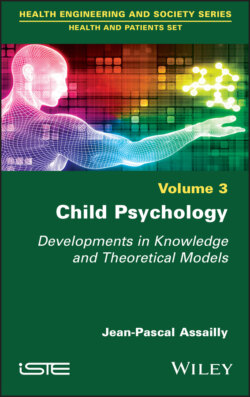Читать книгу Child Psychology - Jean-Pascal Assailly - Страница 78
2.7. Microbiota
ОглавлениеThe term “microbiota” refers to all the microorganisms that live on us or in us. The intestine is the most densely populated, but other organs such as the skin or the respiratory tract are also home to them.
So-called new-generation genetic sequencing technologies have improved our knowledge of the microbiota and identified a much larger repertoire (bacteria, fungi, viruses and parasites) than was previously known.
Thus, some authors suggest that the human being should henceforth be considered as a “holobiont”, that is, a biomolecular ensemble associating the human host with a set of microbes, the whole constituting a single ecological entity.
Several theories attempt to explain the effects of microbiota on the child: hygiene theory assumes an inverse relationship between the frequency of allergic pathologies and exposure to microorganisms (greater circulation of microbes and prevalence of asthma, eczema and urticaria); the “Old Friends” or host-microbiota symbiosis theory assumes that microbial agents associated with the rural, or even ancestral, way of life provide protection against allergic pathologies; Dysbiosis and Biodiversity Loss theory, which assumes that the loss of diversity of the microbiota, favored by the Western lifestyle, leads to a disruption of the balance between microbiota and host, and to perturbations in the immune system leading to the breakdown of tolerance and the appearance of atopic4 diseases.
The first 1,000 days (from conception to the end of the second year) seem to be a very sensitive period for biological influences, such as the microbiota. An undernourished or malnourished microbiota will have long-term consequences on the development of the child and greatly influences the risk of chronic disease. A dialog between the microbiota and the immune system will be established, strongly linked to the environment, to stabilize around the age of three years.
Various environmental factors influencing the microbiota have been identified: the mother’s diet and prenatal exposures influence the immune system of the newborn and the mode of delivery and breastfeeding can also strongly influence the microbiota.
Thus, the analysis of a newborn’s first stools could reveal certain clues about the risk of obesity at the age of three years. This prediction is based on the nature of the bacterial species in the gut. The first stool, or meconium, is essentially composed of material ingested during intrauterine life.
Similarly, the administration of antibiotics to newborns alters the microbiota. Thus, babies who receive antibiotics during their first year have a smaller actinobacteria population at age one than those who received an antibiotic just after birth, or whose mothers used antibiotics during pregnancy and, of course, those who did not receive antibiotics at all.
1 1 IVF = in vitro fertilization and DAI = donor-assisted insemination.
2 2 The functioning of this system will be described later in the chapter on emotions.
3 3 To overcome the lack of precision of routine food health surveillance, total diet studies (TDSs) are national cross-sectional surveys designed to analyze a large number of substances in defined food samples to be representative of the diet of the study population. They are based on food surveys. TDSs allow the identification of substances for which there is a risk of excess in the population and the food vectors contributing most to exposures (Traoré et al. 2018).
4 4 Atopy is a genetic predisposition to the cumulative development of common allergies.
